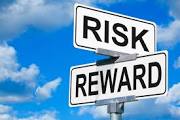Since the Federal Reserve Board continues to postpone increasing their interest rate, savers continue to wait for higher returns as well. Unfortunately, I see a lot of people getting antsy to increase the yields on their investments resulting in risky or less than ideal decisions.
This was driven home recently when a longtime client acknowledged purchasing an investment paying 3.5 percent interest. At first glance, this sounded great when most CDs and other interest-paying investments are paying less than one percent. The caveat was that she would have to wait eight years before she earned the full return offered. For a 79-year old, that seemed a bit too long to wait.
I’ve seen this in other situations with certain types of real estate investments paying over 5 percent yields which also appeared very attractive except the money was also tied up for significant periods of time or the repayment of the original investment was at risk.
The reality is that the choices are limited for someone who wants to earn more interest without taking on more risk. Despite some of the advertisements you may see or stories you’re told, you won’t see higher returns until interest rates in general rise.
Sadly, the main thing you can do is acknowledge the reality of the environment we live in today. While you may recall interest rates over 5 percent on CDs from a decade ago (or even double-digit returns for those saving in the late 1970 or early 1980s), our world has changed a lot since then.
Prudent investors today realize they must hold a variety of assets that perform differently in changing economic conditions. Holding assets that generate very little return is still appropriate when held in combination with other assets that generate a higher return but also involve greater risk.
One benefit of low interest rates is that mortgage rates and interest rates on other types of debt continue to be low which reduces the cost of financing homes or other purchases. Another factor that has delayed interest rates from rising has been low inflation which has kept the price of many goods and services from rising significantly. Someday, we may even fondly recall the days of low interest rates and inflation.
No matter when rates change, successful investors know that patience and discipline are more important than the ability to forecast the future. My recommendation is to prepare now for whatever change the future may bring




